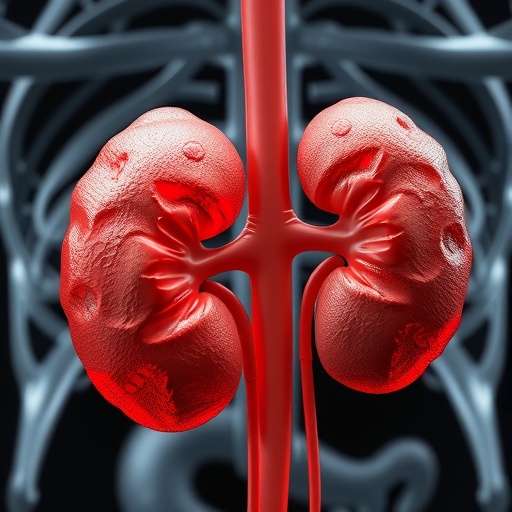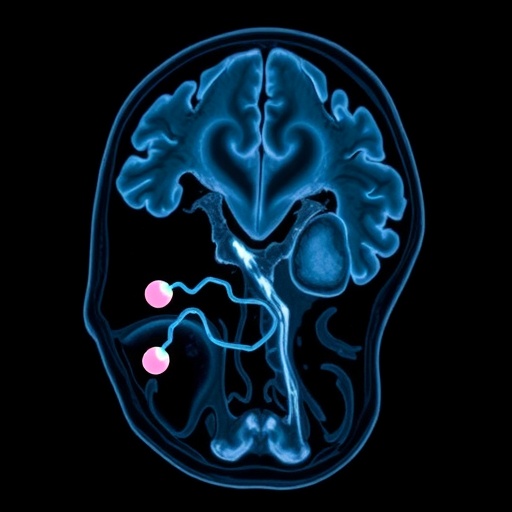
Credit: LSU Health New Orleans
New Orleans, LA – Research led by Ashok Aiyar, PhD, Associate Professor of Microbiology, Immunology and Parasitology at LSU Health New Orleans School of Medicine, has identified a target that may lead to the development of new treatments for the most common sexually transmitted infection in the US. The results are published this month online in PNAS, available here.
Chlamydia is caused by infection with Chlamydia trachomatis bacteria. It can affect both the urogenital tract and the eyes. If untreated, the outcome of both ocular and genital infections can be severe. Ocular Chlamydia infections are the leading cause of infectious blindness, and genital infections can lead to infertility. The health of infants born vaginally to infected mothers is also often severely compromised.
Chlamydia trachomatis bacteria need the essential amino acid, tryptophan, to survive. They are dependent upon their host cells, or the microbiome, to provide it. Genital Chlamydia strains have a unique mechanism to avoid tryptophan starvation. By conditionally making an enzyme called tryptophan synthase, they can use a molecule called indole, which is sometimes made by the genital microbiome, to make tryptophan. Ocular strains make an inactive version of tryptophan synthase or have lost the gene for the enzyme entirely. The goal of this research was to discover why ocular Chlamydia no longer make an active tryptophan synthase.
Dr. Aiyar says, “Our studies demonstrate that small molecules, collectively called trp operon de-repressors, which are produced by the gut microbiome and carried by the circulation to other parts of the body, play a key role. These molecules force Chlamydia to make tryptophan synthase. However, activation of tryptophan synthase in the absence of indole generates ammonia, which kills Chlamydia very rapidly. As such, our findings provide new leads for therapeutics against chlamydia infections that leverage products made by the gut microbiome.”
Previous studies have shown that trp de-repressors also kill other pathogenic bacteria, such as Legionella pneumophila and Mycobacterium tuberculosis, via unknown mechanisms.
“It is possible that the mechanism we have described for Chlamydia extends to these other bacteria as well,” notes Aiyar.
According to the Centers for Disease Control and Prevention (CDC), Louisiana had one of the highest rates of reported cases of Chlamydia trachomatis in the United States in 2017. The CDC reported there were more than 1.7 million cases of chlamydia diagnosed in 2017, representing a 22% increase from 2013 levels. However, the CDC estimates that 2.86 million infections occur annually. A large number of cases are not reported because most people with chlamydia are asymptomatic and do not seek testing.
Next steps include research on the mechanisms to restrict the availability of indole in cells in the genital area, thereby creating conditions under which trp de-repressors will effectively kill genital Chlamydia by forcing the production of ammonia.
###
The research team also included Dr. Shardulendra Sherchand, a fellow in the Department of Microbiology, Immunology and Parasitology at LSU Health New Orleans School of Medicine.
The research was supported by a grant from the National Institutes of Health.
LSU Health Sciences Center New Orleans educates Louisiana’s health care professionals. The state’s most comprehensive health professional university, LSU Health New Orleans includes a School of Medicine, the state’s only School of Dentistry, Louisiana’s only public School of Public Health, and Schools of Allied Health Professions, Nursing, and Graduate Studies. LSU Health New Orleans faculty take care of patients in public and private hospitals and clinics throughout the region. In the vanguard of biosciences research in a number of areas in a worldwide arena, the LSU Health New Orleans research enterprise generates jobs and enormous economic impact. LSU Health New Orleans faculty have made lifesaving discoveries and continue to work to prevent, advance treatment, or cure disease. To learn more, visit http://www.
Media Contact
Leslie Capo
[email protected]
Original Source
http://lsuh.
Related Journal Article
http://dx.




